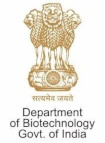Snail maintains the stem/progenitor state of skin epithelial cells and carcinomas through the autocrine effect of matricellular protein Mindin.
| Title | Snail maintains the stem/progenitor state of skin epithelial cells and carcinomas through the autocrine effect of matricellular protein Mindin. |
| Publication Type | Journal Article |
| Year of Publication | 2022 |
| Authors | Badarinath K, Dam B, Kataria S, Zirmire RK, Dey R, Kansagara G, Ajnabi J, Hegde A, Singh R, Masudi T, Sambath J, Sachithanandan SP, Kumar P, Gulyani A, He Y-W, Krishna S, Jamora C |
| Journal | Cell Rep |
| Volume | 40 |
| Issue | 12 |
| Pagination | 111390 |
| Date Published | 2022 09 20 |
| ISSN | 2211-1247 |
| Keywords | Carcinoma, Squamous Cell, Cell Line, Tumor, Epithelial Cells, Extracellular Matrix Proteins, Humans, Integrins, Neoplasm Proteins, Neoplasm Recurrence, Local, Neoplastic Stem Cells, Skin Neoplasms, Snail Family Transcription Factors |
| Abstract | Preservation of a small population of cancer stem cells (CSCs) within a heterogeneous carcinoma serves as a paradigm to understand how select cells in a tissue maintain their undifferentiated status. In both embryogenesis and cancer, Snail has been correlated with stemness, but the molecular underpinning of this phenomenon remains largely ill-defined. In models of cutaneous squamous cell carcinoma (cSCC), we discovered a non-epithelial-mesenchymal transition function for the transcription factor Snail in maintaining the stemness of epidermal keratinocytes. Snail-expressing cells secrete the matricellular protein Mindin, which functions in an autocrine fashion to activate a Src-STAT3 pathway to reinforce their stem/progenitor phenotype. This pathway is activated by the engagement of Mindin with the leukocyte-specific integrin, CD11b (ITGAM), which is also unexpectedly expressed by epidermal keratinocytes. Interestingly, disruption of this signaling module in human cSCC attenuates tumorigenesis, suggesting that targeting Mindin would be a promising therapeutic approach to hinder cancer recurrence. |
| DOI | 10.1016/j.celrep.2022.111390 |
| Alternate Journal | Cell Rep |
| PubMed ID | 36130502 |
| Grant List | R01 AR053185 / AR / NIAMS NIH HHS / United States |

